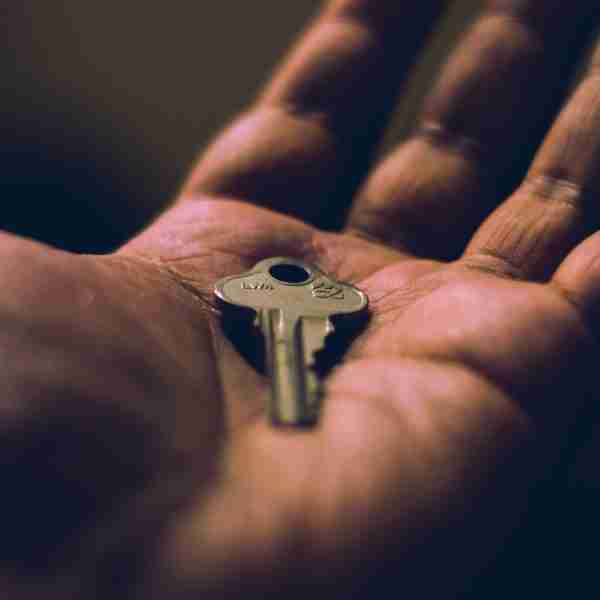Tips, resources, meditations, and practices to help you prioritize your mental health during this unique period of time. 💕
*If you click a link on this website for a product we recommend, we may earn a small commission at no additional cost to you that helps us fund and create more content to help our users.
1- Indulge in sometimes weird but harmless quirks that are satisfying to maybe only you 😂
These past two months, I’ve been freakishly protective over the very little “me time” I get—typically between 9pm-10:30pm, after my son goes to sleep, dinner is eaten, and household errands are haphazardly accomplished. That hour-and-a-half is when I go deep on the things that are just for me. I’ve been singing off-key to ’80s and ’90s tracks while playing Tetris on my phone, watching Netflix documentaries on ocean creatures (giant squids!), scrolling through new clothing trends on IG, and thinking about a lot of cheeses. I’ve found that spending time like this can be more valuable to my head space than crossing something else off my to-do list. -Carey, GNI Team
Read the full editor’s note
👉
2- Take a Coa class
Coa holds therapy & expert-led classes for mental health, all grounded in community. With Coa, you will learn the skills and find the support you need to stay well and thrive in modern life. We offer expert-led groups & classes that cover: anxiety, confidence, communication, and more.
Join Coa 👉
3- Visit this checklist when finding a therapist
I recently moved to a new city and have decided that it’s time to find a new therapist. I put together this checklist to share a few quick tips for anyone else who may be looking. Finding a therapist can be daunting but it’s worth doing the work to find a good fit. Just make sure you are patient with yourself through the process. – Guest tip from: Sahaj Kohli, Founder of @browngirltherapy
Visit the checklist 👉
4- Connect with a therapist
If you find yourself trying to cope and not being able to function in your daily life to the point where you’re having difficulty meeting your basic needs, or if your reaction is interfering with your daily functioning to the point where you’re unable to complete tasks, I would 100% recommend reaching out to a therapist for help. Connecting with a therapist for support with managing your reactions to trauma and loss can offer space for healing that is invaluable. There’s power in learning more about yourself through exploring with someone who is not biased and non-judgmental, as well as an expert in helping others heal. – Guest tip from: Lisa Henshaw, PhD, LCSW
Read more tips 👉
5- Add creativity to your dream analysis
I work with a lot with clients using creativity as a means to express the same things you would with talk therapy, but adding writing and visual art to explore those same thoughts and ideas. I really advocate for tapping into your more creative spaces in times of stress, especially when it comes to dream analysis.You could keep a journal by your bed and write things down in the morning. Write down the main feelings present when you wake up. Or, if you prefer, make a visual representation of something that was present in the dream so it doesn’t bleed into the rest of your day in a way that’s hard to process. – Guest tip from: Naomi Cohen-Thompson, LCAT
Read more tips 👉
6- Cope with collective trauma
When coping with the collective trauma we’re experiencing right now, it’s important to understand that every person’s reaction to trauma is different and there’s no “right” or “wrong” way to respond. One way to cope is to help reassure yourself that your reaction is normal for you and to not question it in comparison to others. – Guest tip from: Lisa Henshaw, PhD LCSW
Read more tips 👉
7- Read your body through your breath
Another technique for mind-body connection is being aware of our breath, which is like taking a thermometer and finding out how anxious we are. Take a breath right now. Where do you feel the tension as you breathe? Is your breath labored or do you feel at ease? By asking yourself these questions, you’re getting to know your body-mind connection better – Guest tip from: Lynne matte, PhD
Read more tips 👉
8- Practice adaptive coping techniques
If you’ve acknowledged you’re feeling anxious, you can pivot to focus on empowering yourself through your own personal agency to adopt coping skills that are adaptive and work for you (every person is different). Adaptive coping refers to coping skills that are healthy, which assist the person towards positive functioning and increasing their well-being. Examples include: Exercise, especially yoga or breathing techniques, talking to a friend, or creating expressive art. – Guest tip from: Lisa Henshaw, PhD LCSW
Read more tips 👉
9- Reflect and unwind with these Ban.do resources
From coloring pages to reflection worksheets, Ban.do’s collection of interactive resources is here to help check in on your mental health and the mental health of those around you.
explore the resources 👉
10- Join a NAMI support group
NAMI Connection Recovery Support Group is a free, peer-led support group for any adult who has experienced symptoms of a mental health condition. These 90-minute, remote sessions are free and confidential. Each session is a safe space to learn more about your mental health and connect with peers also struggling.
find a support group 👉
11- Text Crisis Text Line to be connected with a counselor
You are not alone. Whatever you’re feeling, Crisis Text Line is here to support you and listen. For free 24/7 support at your fingertips, text 741741 for the US and Canada. Text 85258 for the UK and 086 1800 280 for Ireland.
visit crisis text line 👉
12- Reconnect with weaker ties
While conversations with close ties are comfortable and supporting, reconnecting with weaker ties push us to discuss new topics, expand our thinking, and move away from the monotony of social distancing. It’s an opportunity to share more meaningful updates and revive relationships that have fallen off in the hustle and bustle of “normal” life.
read the article 👉
13- Channel your feelings into something creative
We’re not saying art is a fix-all, but we’re setting aside time to channel how we’re feeling into creative outlets to make beautiful things that spark joy. This week, we’re making these tissue-paper dying silk pants.
dye your own pants 👉
14- Explore your Spotify Daily Wellness playlist
Spotify’s personalized Daily Wellness playlists lean into the reality that we need comfort and mindfulness now more than ever. In your playlist, you can listen to a custom combination of meditations and soothing songs to get you through the day.
listen to your PLaylist 👉
15- Read this Twitter thread of therapy insights
Therapy is a luxury and not everyone, especially right now with the economic uncertainty, has access to the coping strategies therapists are sharing with clients. This Twitter thread answers this question: “whats the most helpful thing your therapist told or taught you that has made things a little easier?”
read the thread 👉
16- Use Frame to start your mental health journey
Whether you tune into a workshop or use our matching tool to find the right therapist for your specific needs, Frame is a mental wellness network where all kinds of people can start making progress on their terms.
Visit Frame 👉
17- Follow these IG accounts for mental health tips
Instagram definitely isn’t therapy, but there are some therapists, writers, activists, and artists I enjoy following for mental health tips and reminders. My favorites right now are: @lisaoliveratherapy, @drjennhardy, @alex_elle, @livinlikeLARZ, and @millennial.therapist – Jenna, GNI Team
CHECK OUT OUR IG 👉
18- Follow @browngirltherapy
Brown Girl Therapy is a wellness and mental health community for first- and second-generation immigrants. I created this community because I found myself constantly curating who I was in different circles to feel accepted, and I wanted a space where I could honestly explore what it meant to be bicultural and educate on, promote, and normalize therapy and support-seeking behaviors in marginalized communities. – Guest tip from: Sahaj Kohli, Founder of @browngirltherapy
visit their InstaGram 👉
19- Talk through feelings of loss in a safe space
Talking through feelings of loss or working through anger related to loss with positive coping (such as exercise) can support how we move through grief in a healthy manner. It can help us cope when we know what to expect; however, COVID-19 is quite unpredictable. Grief is also unpredictable. Therefore, it’s important to work on letting go of the control of our emotions and understand that each day will be different and it’s normal to have good days and bad days. – Guest tip from: Lisa Henshaw, PhD, LCSW
read more tips 👉
20- Set boundaries with media, friends, and family
Setting boundaries with media, friends, and family can be extremely helpful right now. Because this is a collective trauma, it may seem like this is all anyone is talking about, which you may find helpful or harmful. My recommendation would be to evaluate your reactions to media exposure (watching the news, scrolling through social media) and to speaking with friends, loved ones, and colleagues. This self-evaluation can help to identify where your boundaries need to be, which may also take some trial and error to figure out (it won’t be perfect!). The goal is to set boundaries that work for you and support your well-being. – Guest tip from: Lisa Henshaw, PhD, LCSW
read more tips 👉
21- Keep a gratitude journal
A good way to find meaning in this moment is by finding out what we can be grateful for right now. Keeping a gratitude journal can help you find the small things that make you happy, like the sip of a good hot chocolate or the laugh of your family member. – Guest tip from: Lynne matte, PhD
read more tips 👉
22- Do a full body scan
Doing a body scan meditation helps identify how our body reacts to stress and tension. Start with being aware of the top of your head, slowly moving down to your face, etc. This can show you how tense your shoulders are or where you hold your breath. It can help us understand the body-mind connection. – Guest tip from: Lynne matte, PhD
read more tips 👉
23- Adjust to new levels of functioning
It can be hard to adjust to new levels of functioning while we try to cope with the Quarantine Blues and mental health while social distancing. We’re working to find compassion and patience for how we’re functioning, even if it still doesn’t feel “normal”.
read the article 👉
24- Call the NAMI HelpLine
The NAMI HelpLine volunteers can answer questions, offer support and provide practical next steps for your mental health. The line is open Monday through Friday, 10am-6pm ET. Call 1-800-950-NAMI (6264) or email [email protected] to reach a volunteer.
learn more about the nami helpline 👉
25- Become a Crisis Text Line counselor
Become a Crisis Text Line counselor to answer texts from people in crisis, bringing them from a hot moment to a cool calm through active listening, collaborative problem solving, and safety planning. You can train from anywhere—in your PJs, in a coffee shop, wherever.
become a volunteer 👉
26- Frame your thinking as “both/and”
We’re taking tips from this article to try and reframe our thinking to stay grounded in the positive, even when we’re feeling anxious and worried about what’s happening around us. “Both/and” allows us to feel these two opposed feelings at once, without one weighing more than the other. As this article says, “the pandemic is horrible AND we can allow our souls to breathe”.
read the article 👉
27- Find ways to manage your loneliness
These days social distancing can feel a lot like social isolation, but remember, you are never alone. This article features ideas for coping with the loneliness you may be feeling, like pausing to smell your neighbors’ cooking, listening to recordings of friends playing music, or keeping a list of friends you can always reach out to for virtual company.
read the article 👉
28- Start your own garden
We’ve found that gardening can be a positive stress release during times when we’re feeling overwhelmed or anxious. You don’t need to be a pro to start your own backyard garden. We’re ordering seeds, pots, and tools to spend more time outside and remind ourselves good things can take time to bloom.
watch us plan our garden on an iPhone 👉
29- Listen to this podcast on how to get therapy when you can’t leave the house
Taking care of your mental health during the coronavirus pandemic is important, and it’s still possible to get therapy even when you’re staying at home. This episode gives information on making online therapy a little easier, low-cost therapy and free mental health hotlines to get you the help you need. (Description from NPR)
listen to the episode 👉
30- Understand how the pandemic is influencing your dreams
Having anxious, vivid dreams lately? You’re not alone. In the NPR segment, learn more about how boredom and anxiety contribute to the dreams keeping you up at night. Want to escape the dreams? Try visualizing peaceful, positive things, like someone you’d want to spend time with during the pandemic, instead of letting your anxious thoughts dominate. It’s harder than it sounds to shut down worry, so if it doesn’t work tonight, there’s always tomorrow.
listen to the episode 👉



Leave a Reply